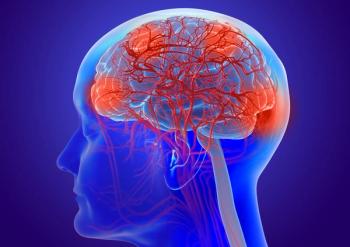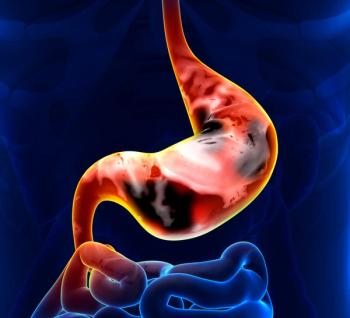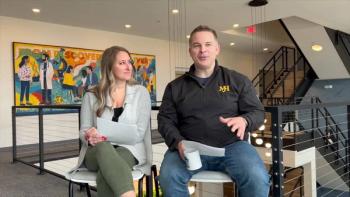
Oncology NEWS International
- Oncology NEWS International Vol 4 No 3
- Volume 4
- Issue 3
Leukemia Patients Get Unrelated Cord Blood
PITTSBURGH--Early research into umbilical cord blood (UCB) transplantation for cell reconstitution indicates that unrelated UCB transplantation is feasible in children.
PITTSBURGH--Early research into umbilical cord blood (UCB) transplantationfor cell reconstitution indicates that unrelated UCB transplantationis feasible in children.
Speaking at the Fifth Annual Pittsburgh Cancer Conference, JoanneKurtzberg, MD, reported on five children who have received unrelatedUCB transplants at Duke, where she is co-director of the MedicalCenter's Pediatric Bone Marrow Transplant Program, and directorof the Pediatric Bone Marrow Laboratory. She also indicated thatstudies to determine its suitability for adult transplant patientsare soon to begin.
Unrelated transplantation is feasible, she said, because UCB-derivedstem and T cells may be more tolerant of disparate host HLA antigensthan bone marrow-derived cells, and the risk of graft-versus-hostdisease (GVHD) may be less than with unrelated bone marrow transplants.
Related Cord Blood Transplants
In 1988, a young boy with aplastic anemia became the first patientto undergo transplantation with related UCB donated by his sister."The child's marrow grafted much as one would expect withbone marrow; he experienced no GVHD and survives today in excellentcondition," Dr. Kurtzberg said.
Approximately 55 related UCB transplants have now been performedworldwide in children aged 0.8 to 16 years.
Recovery of white blood cells, absolute neutrophil count (ANC),and platelets is delayed with UCB transplants, compared with allogeneicbone marrow transplants, Dr. Kurtzberg said, and growth factor,administered to half the patients in the related UCB registry,has no obvious influence.
"Once the graft begins to grow, however, the quality is asgood as one would expect with bone marrow transplantation,"she said. Five graft failures were seen in the first 40 patientsreceiving related grafts, four of whom were larger children. Recently,however, two 40-kg children receiving unrelated transplants haveengrafted.
Although the median volume of UBC typically collected is onlyabout 10% of the amount of bone marrow used in transplantation,the number of CFU-GM (colony forming unit-granulocyte macrophages)per kilogram is in the same range, indicating that the true stemcell is enriched in UCB, perhaps 10- to 100-fold greater thanin bone marrow transplantation, she said. She also noted thatit may be possible to ex vivo expand UBC cells prior to infusion.
Why Use Unrelated UCB?
Dr. Kurtzberg said that when the unrelated UCB transplant projectwas started at Duke, they were asked why they didn't simple userelated or matched unrelated bone marrow. However, among the firstfive young patients transplanted, the first and third patientshad both relapsed and had no matches in their family. "Theirown marrow was not viable for autologous transplantation, andwe didn't have the 4 to 6 months it takes to find an appropriatedonor," she said.
No donor was identified in the family or in the matched unrelateddonor program for the other three patients, all of whom were fromdifferent ethnic minority groups.
In a related UCB transplant at Duke, a 6-year-old boy with AMLwho had failed an autologous transplant, was grafted with hisbaby sister's haploidentical UCB. The transplant engrafted, andthe patient recovered from grade II GVHD but died 5 months outof viral pneumonia.
"This transplant answered two important questions, however,"Dr. Kurtzberg said. "First, how well would a haploidenticalUCB graft take; and second, was maternal cell contamination ofUCB responsible for GVHD? DNA fingerprinting sensitive to 1/100,000cells revealed no evidence of maternal cells when GVHD developed."
In August and September of 1993, the first two unrelated UCB transplantswere performed at Duke, with units supplied by Dr. Pablo Rubenstein,director of the Placental Blood Bank at the New York Blood Center.
The first patient, a 3-year-old with T-cell ALL in relapse, engraftedwell, recovered immune function, had no GVHD, but died of radiation-inducedinterstitital pneumonia on day 65. By early November, 1993, patient2 had engrafted and developed mild GVHD with grade 1 skin involvementthat resolved with a single day's administration of high-dosesteroids; this patient was healthy at 14 months post-transplant.
Patient 3 had primary graft failure, but was alive at 9 monthswith autologous reconstitution. Patient 4 engrafted, developedtransient grade 1 GVHD with skin involvement that responded tosteroids, and was alive and at home 5 months post-transplant withnormal hematopoietic function.
Patient 5, transplanted October 28, 1994, fully engrafted, experiencedgrade 2 GVHD with some skin and intestinal involvement, whichresolved with a short course of steroids, and is currently aliveand at home.
New Thawing Technique
ANC recovery in patients 4 and 5 was more rapid than in patients1 and 2. "We believe a change in the thawing technique mayhave contributed," Dr. Kurtzberg commented.
Traditionally, UCB is thawed at the bedside and infused intravenouslyover 10 minutes. However, in a method developed by Dr. Rubensteinat the New York Blood Center, UCB is thawed in the lab, immediatelymixed with a dextrin albumin (DA) solution, allowed to incubatefor 5 minutes, centrifuged, and resuspended into the volume ofDA deemed appropriate for that particular patient. Patients 4and 5 received UCB thawed in this manner, she said.
Who Owns Umbilical Cord Blood?
Dr. Kurtzberg sees ownership of umbilical cord blood (see storyabove) as a potential ethical and moral issue. Currently, thereis little problem, because it is a discarded substance owned bythe hospital. However, if it becomes routine to save cord bloodfor the baby from whom it came, it then becomes a valuable product,and issues of ownership will almost certainly arise, she believes.
Ownership and banking of cord blood are intertwined issues, andat least one commercial company has been established to help parentsbank their newborn's cord blood for possible future need.
Dr. Kurtzberg noted that banking raises many questions: "Shouldwe bank; if so, how many banks and where? What population shouldwe target? How long should we store--will cells cryopreservedfor 50 years be as effective as those stored for 5? Can we separate,concentrate, and store cells in a smaller volume? How do we assurequality collection from various centers?"
Articles in this issue
almost 31 years ago
Selecting a Support Group for Patients With Prostate Carcinomaalmost 31 years ago
Antman Provides Outlook on Use of High-Dose Chemoalmost 31 years ago
Radiofrequency Ablation of Brain Tumors New Optionalmost 31 years ago
Oncologist Enthusiastic About Capitated Planalmost 31 years ago
GAO Says Federal Research Needed on Safety of Portable Cellular Telephonesalmost 31 years ago
Varmins Chooses New Director for NIH Office of Alternative Medicinealmost 31 years ago
'Visible Man' Hits the Internet, Radiologists Get the First Lookalmost 31 years ago
Ultrafast Full-Body MRI Eases Procedure in Claustrophobics, KidsNewsletter
Stay up to date on recent advances in the multidisciplinary approach to cancer.


















































































